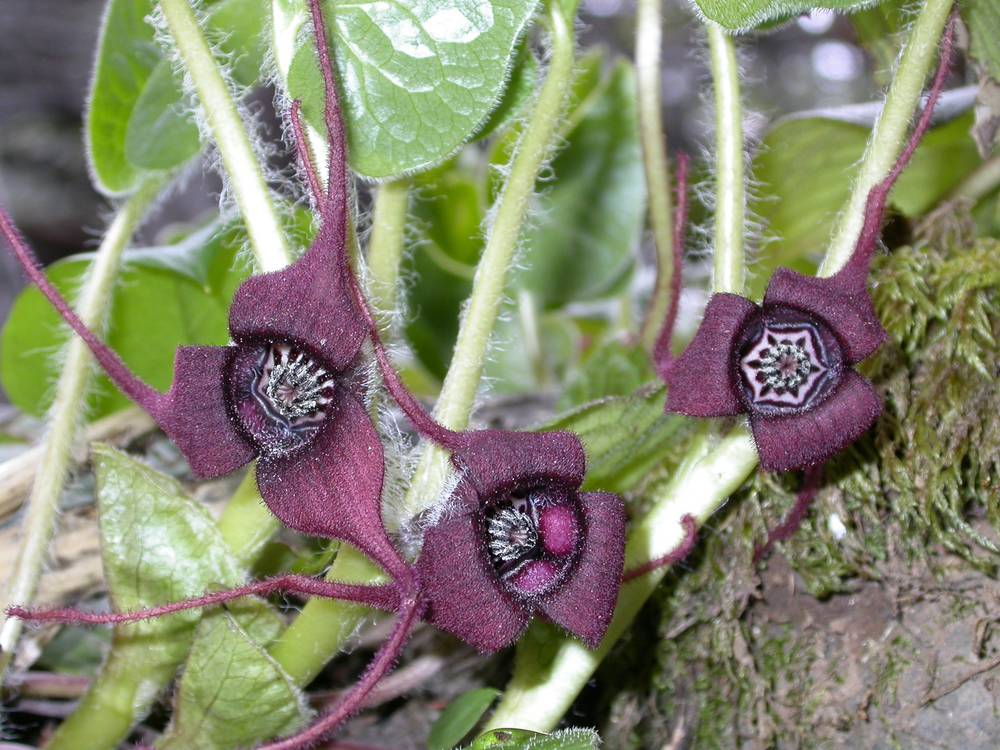Asarum caudatum
Asarum
long-tailed wild ginger, western wild ginger
wild ginger
horizontal, shallowly buried;
internodes (5)15–65 mm.
blades cordate; (1.5)3–8.5 × (2)4.5–12.5 cm, not variegated; marginal hairs perpendicular to margin or curved toward tip;
tips usually obtuse, occasionally broadly acute, abaxially sparsely appressed-hirsute; at least proximally, adaxially glabrous or sparsely appressed-hirsute;
petioles 6–19 cm.
cauline and basal, alternate, with both foliage leaves and sessile triangular scales;
foliage blades reniform;
surfaces pubescent at least on lower surface and on margins;
petioles present.
terminal; solitary flowers;
bracts absent.
15–50 mm.
calyx tubes cylindric, externally dark red to brownish purple, rarely green; hispid, internally white, usually with median purple stripes, with purple or rarely white hairs;
lobes spreading or weakly reflexed at anthesis; (11)30–75 mm;
tips filiform-attenuate, abaxially purple or greenish, sparsely hispid, adaxially purple, puberulent with crisped purple hairs.
sepals touching and forming a false tube;
tubes straight;
vestigial petals present or lacking;
stamens 12; distinct.
fleshy.
ovoid, with fleshy appendage.
=26.
Asarum caudatum
Asarum
Mesic or wet places in conifer forests or rocky areas. Flowering Mar–Aug. 0–1800 m. BW, Casc, CR, Est, Sisk, WV. CA, ID, WA; north to British Columbia, northeast to MT. Native.
Temperate Northern Hemisphere. ~75 species; 3 species treated in Flora.
The flowers of Asarum are mostly self-pollinated, but they are occasionally visited by mycotrophic flies. The fatty appendages (elaiosomes) on the seeds attract ants, which help disperse the seeds. Despite its common name, Asarum is not closely related to the culinary species of ginger (Zingiber officinale). The name is derived from the ginger-like odor of the rhizomes. Asarum should not be consumed due it its high aristolochic acid content. Asarum hartwegii has been collected only once, on the Little Chinquapin Mountain in Jackson County. Its variegated leaves are similar to those A. marmoratum, but the inner surfaces of its calyx tubes are white with red stripes while those of A. marmoratum are red-brown without stripes.
Christian Feuillet
- Local floras:
BC,
CA,
OR,
WA
- Local Web sites:
CalFlora,
CalPhotos,
Flora NW,
PNW Herbaria,
Turner Photog.
WildflowerSearch
iNaturalist (observations)
USDA Plants Database
- LBJ Wildflower Center
- SEINet
- Plants of the World Online
- Encyclopedia of Life
- Wikipedia
- Google Image Search



